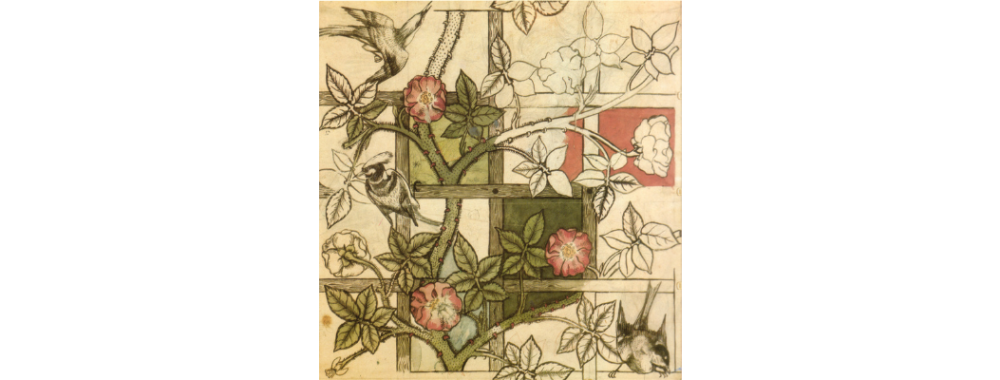
Day: Wednesdays
Dates: 24 January – 20 March 2024 (1 x week break for Half Term – Wednesday 14 February)
Time: 18:00 – 20:00
Level: Beginners
Tutor: Vivienne Lawes
Location: 124 Kennington Park Road, London, SE11 4DJ
Cost: £200
COURSE OVERVIEW
Have you ever wondered how to tell the difference between Arts & Crafts and Art Deco, Renaissance and Rococo? This course delves into the major stylistic movements that took place in Europe from the medieval period to the eve of the Second World War, examining a range of objects, furnishings and interior design changes that reflected taste and status of collectors and consumers at the forefront of fashion.
COURSE DESCRIPTION
Week 1 | Saying Goodbye to the Medieval World: Part 1 – Early Renaissance (c.1380 – 1450)
The intellectual and literary climate of 14th century Italy and the socio-economic changes of late medieval Europe manifested in a new world view that gave agency to human beings in God’s creation. Humanist scholars rediscovered manuscripts from the ancient world and with them came a rebirth of interest in ancient classical culture, which manifested in the world of art and objects.
Week 2 | Intellect and Harmony: Part 2 – High to Late Renaissance (c.1450-1580)
The second half of the 15th century saw new materials and principles and a clear return to the principles of balance and proportion seen in Greek and Roman art. Out of this came a new identity in the decorative arts of Renaissance Europe and the modern era of collecting and patronage.
Week 3 | Boldness and Theatricality: The Baroque (c.1580-1720)
Baroque style spanned the whole of the 17th century and beyond, a period in which notions of the exotic and the dramatic found fertile intellectual ground. This was reflected in the fine and decorative arts, from the virtuoso sculpture of Bernini, the floral marquetry of Northern European furniture and the auricular style of the silver creations of the brilliant van Vianen brothers, to the English court style of William and Mary under the rigorous eye of Daniel Marot. It was also the period in which conscious appreciation of everyday objects as ‘antiques’ germinated. This lecture explores the intellectual climate and the stylistic motifs that made the Baroque such a long-lived international style.
Week 4 | Froth and Frivolity: Rococo (c.1720 – 1760)
The unapologetic abandon of the mid-18th century’s Rococo style saw a rejection of the seriousness and grandeur of Baroque art and design. There was not a straight line in sight. This lecture immerses itself in curves, cartouches, rockwork, shells, crustaceans and the arabesque.
Week 5 | Chaste Minimalism: Neo-Classicism (c.1760 – 1800)
After the joyous excesses of the Rococo, the sparse reserve of the Neo-Classical period presented an altogether more intellectual and rigorous schema. Publications about archeological discoveries, increasing numbers of Grand Tourists travelling into Greece and Winckelmann’s codification of ancient classical works of art all helped to revive interest in classicism at its source. Robert Adam and Josiah Wedgwood were the key figures in British design and this lecture explores both their contributions and those of their peers.
Week 6 | The Reform Movement: The Aesthetic and Arts & Crafts Movements, c.1860-1890
‘Art for Art’s Sake’ was the motto of celebrated aesthetes like Oscar Wilde and the Oxford academic Walter Pater, who pushed against conventional life in Victorian England. The Aesthetic Movement was all about the pursuit of beauty, resulting in the production of artworks that were unashamedly gorgeous. Favourite motifs such as the lily, sunflower and peacock adorned many of the objects, while artists such as James Abbott McNeill Whistler, Aubrey Beardsley and Frederic Lord Leighton seduced the senses – sometimes outraging conventional tastes.
The Arts & Crafts Movement, like the Aesthetic Movement with which it was contemporaneous, was a reaction against the revivalist styles that dominated mid-19th century Britain. The leaders of the movement, most famously William Morris, believed in the moral purpose of art, the integrity of the craftsperson and the intrinsic beauty of materials. It became a key signatory of reformist style and its legacy is still felt in design today.
Week 7 | Go with the Flow: Art Nouveau (c.1890 – 1920)
The sinuous, characteristically whiplash forms that provide the blueprint for Art Nouveau are seen time and again in the fine and decorative art of the late 19th and early 20th centuries, until wiped away by the First World War. A truly international movement, the varied incarnations of the style in different countries is examined in a lecture that celebrates fluidity and movement.
Week 8 | Geometric Joys: Art Deco (c.1920 – 1939)
This lecture examines Art Deco in terms of its historical context – a new style that emerged in the aftermath of the First World War – and its formal characteristics. It traces the various sources of inspiration embraced by designers of the period, such as avant-garde art, the cultures of African, Aztec and Mayan peoples, the exotic appeal of Egypt following the discovery of Tutankhamun’s tomb, and the development of technology and the internal combustion engine.
What is included: All teaching
What isn’t included: Please bring writing material.
15% discount available for City & Guilds of London Art School students, alumni and staff. Contact eveningcourses@cityandguildsartschool.ac.uk to receive the discount code.
Please note: in accordance with Eventbrite’s Terms of Service, Eventbrite’s fees are non-refundable. Any refunds made for Evening Course bookings will have Eventbrite’s fees deducted, unless we cancel the course. For more information, please see our terms and conditions.


